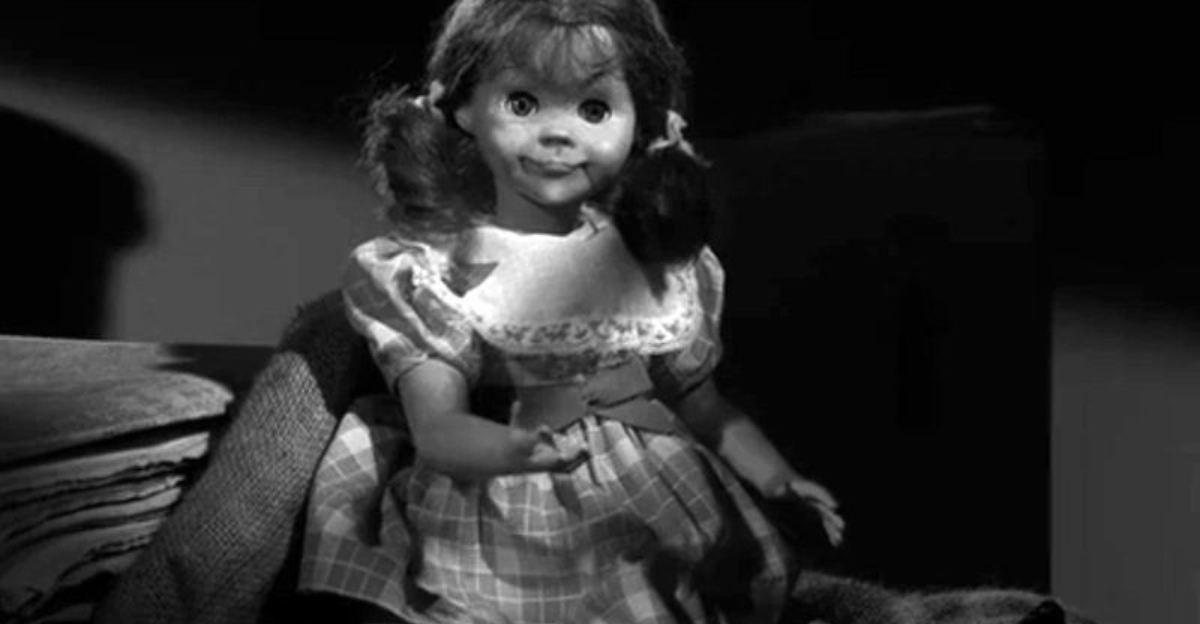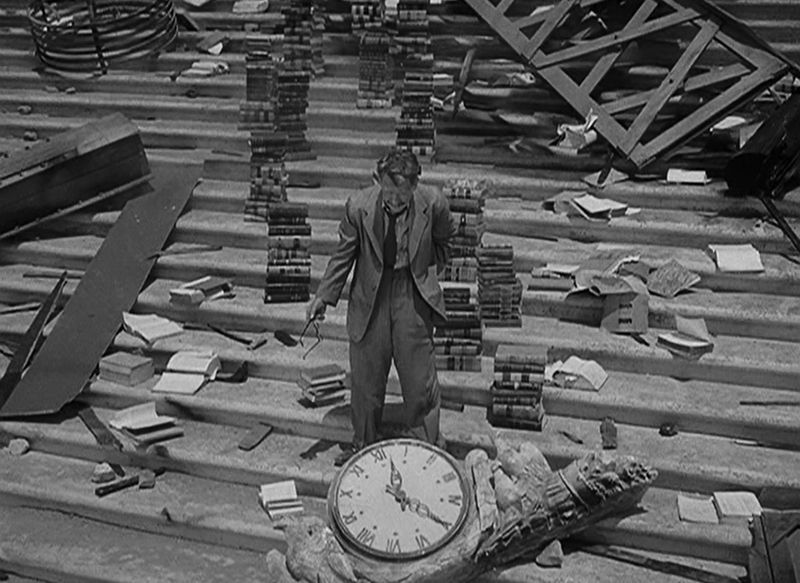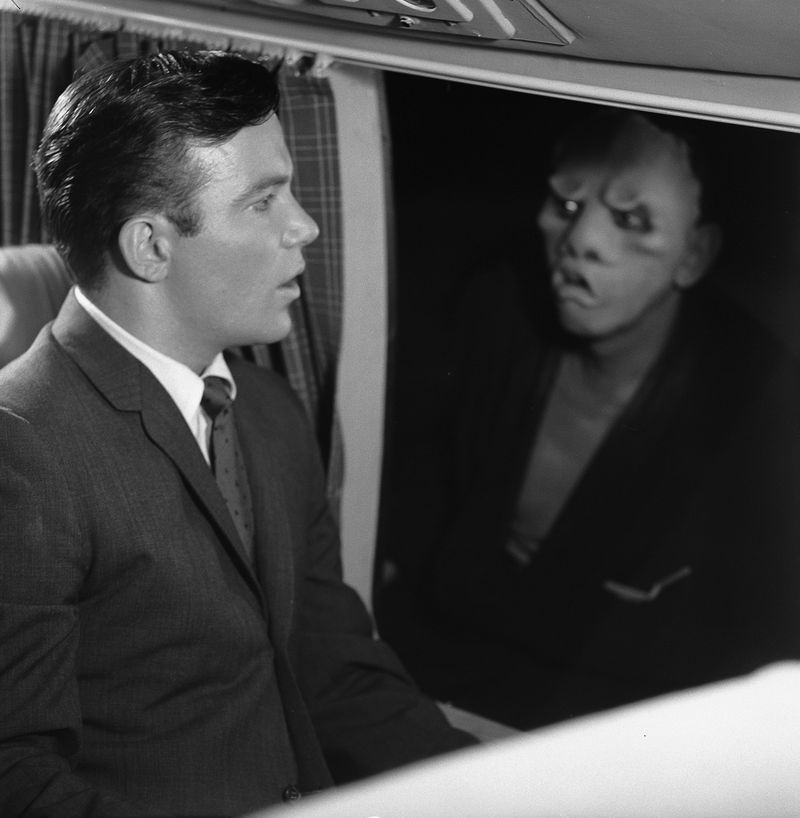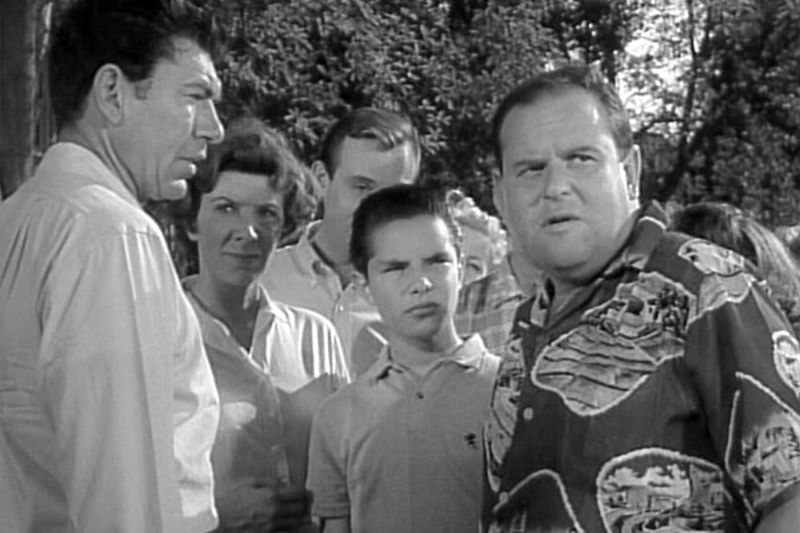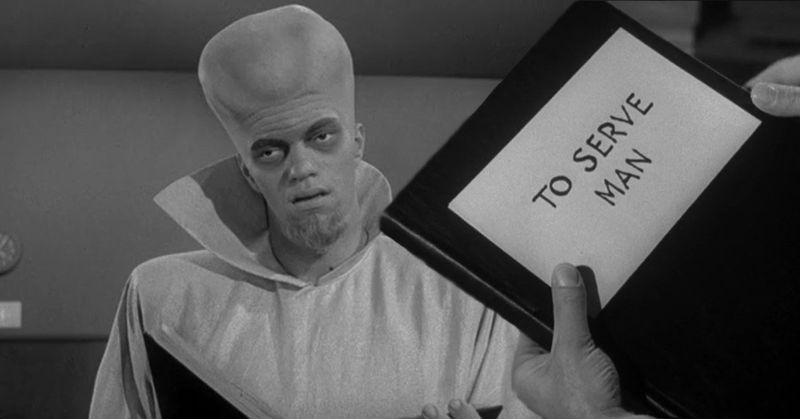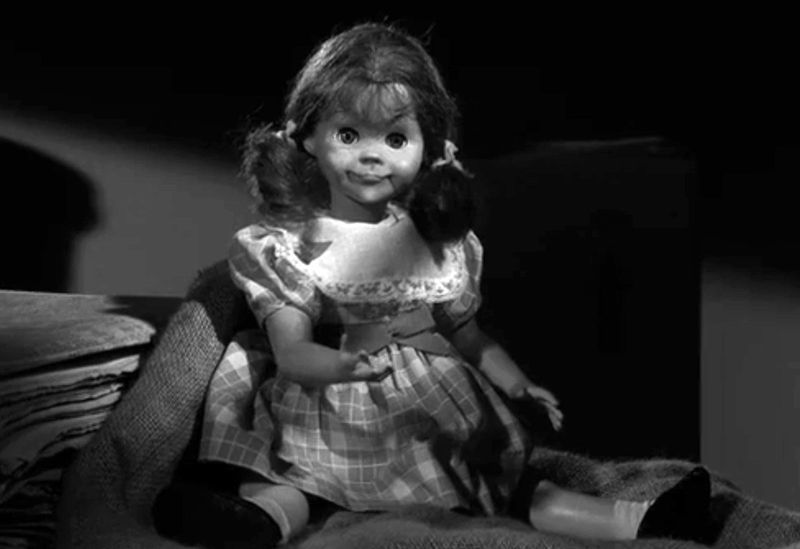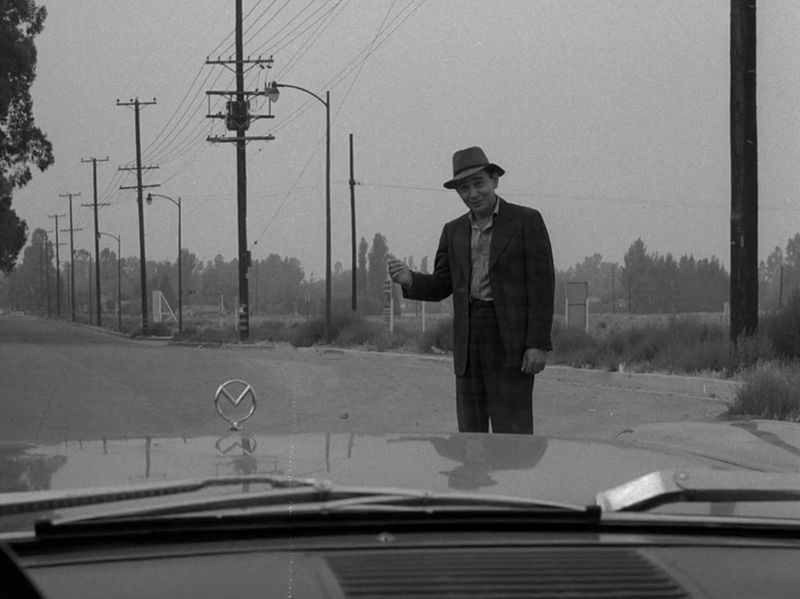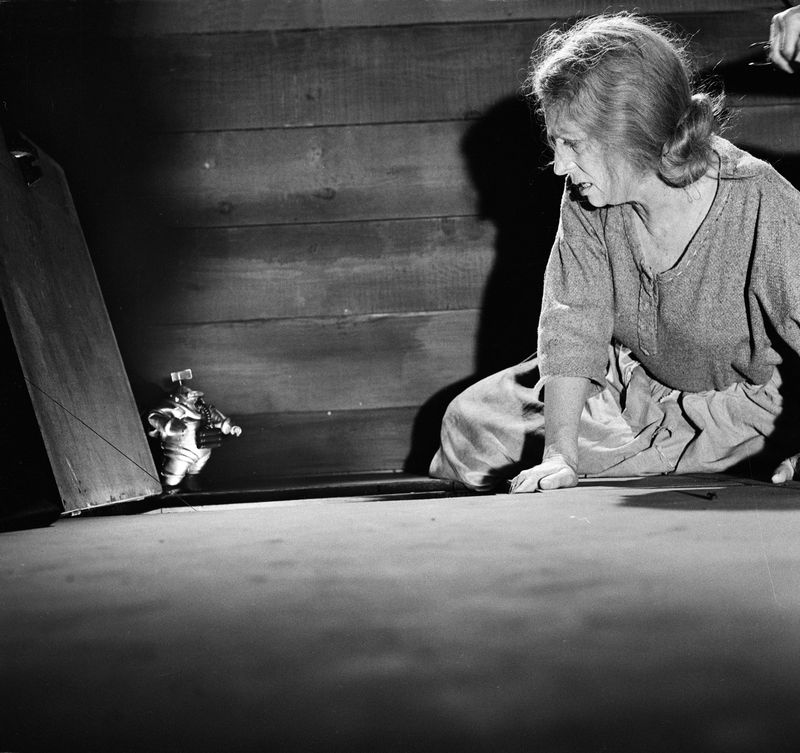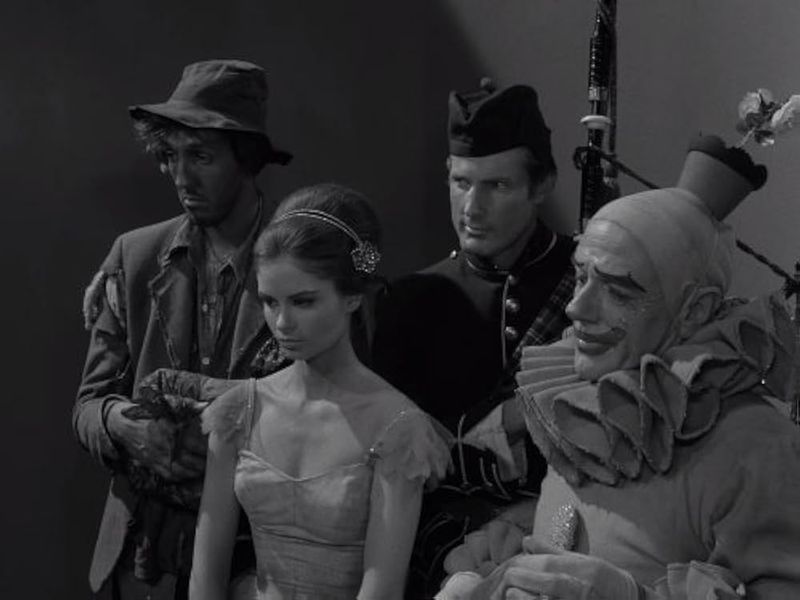For over six decades, The Twilight Zone has bent minds, chilled spines, and made audiences question the world around them. Rod Serling’s anthology of the uncanny became a blueprint for modern sci-fi and horror—and some episodes still cling to our memories like a bad dream. These 10 unforgettable stories continue to haunt viewers long after the credits roll.
1. “Time Enough at Last” (Season 1, Episode 8)
Burgess Meredith’s portrayal of a bespectacled bookworm who survives a nuclear blast only to have his glasses break is one of TV’s most devastating moments. His passion for literature becomes his undoing, a cruel twist of fate. His despair echoes the loneliness of a world without companionship.
The haunting image of a man finally alone with his books—only to lose everything—still stings. This chilling tale of irony and solitude leaves viewers questioning the fragile nature of happiness.
Did you know? This episode is often cited as a quintessential example of the show’s darkly ironic storytelling.
2. “Eye of the Beholder” (Season 2, Episode 6)
Beauty is in the eye of the beholder—or is it? A woman undergoes surgery to look “normal,” but the twist ending flips societal norms on their head. Her face reveal—and her doctors’—remains iconic, challenging perceptions of beauty.
Viewers are thrust into a world where ‘normal’ is subjective, and appearances deceive. The dramatic tension builds, leaving audiences questioning societal standards.
Fun fact: The episode cleverly uses lighting and camera angles to keep viewers in suspense until the big reveal. The shock factor remains potent even after multiple viewings.
3. “Nightmare at 20,000 Feet” (Season 5, Episode 3)
What’s scarier than flying? Seeing something on the wing… and no one believes you. William Shatner’s panic as he spots a gremlin tearing the plane’s wing is legendary. Anxiety mounts as reality blurs into nightmare.
The episode taps into primal fears of isolation and disbelief, with Shatner’s performance amplifying the terror. The gremlin’s eerie presence becomes an unforgettable specter of dread.
Did you know? This episode has been parodied and referenced in various media, cementing its status as a cultural touchstone in horror and suspense.
4. “The Monsters Are Due on Maple Street” (Season 1, Episode 22)
Paranoia spreads faster than alien invasion. A suburban street devolves into chaos when power outages spark suspicion and fear. Neighbors turn against each other as trust erodes, highlighting mob mentality.
The episode critiques Cold War paranoia, illustrating how fear can lead to self-destruction. Its message about the dangers of misplaced suspicion remains relevant today.
Fun fact: The episode was inspired by McCarthy-era tensions, serving as a cautionary tale against hysteria and scapegoating. Its legacy endures as a powerful social commentary.
5. “To Serve Man” (Season 3, Episode 24)
“It’s a cookbook!” Three words that traumatized a generation. Aliens arrive with promises of peace, but hide a dark secret. The final reveal turns diplomacy into doom, shocking viewers with its sinister twist.
The episode explores themes of trust and deception, highlighting how appearances can mislead. The chilling revelation remains a classic twist ending.
Did you know? “To Serve Man” was based on a short story by Damon Knight, and the phrase has since become synonymous with unexpected betrayal. Its impact on pop culture is undeniable.
6. “Living Doll” (Season 5, Episode 6)
“My name is Talky Tina… and I’m going to kill you.” A man’s battle with his stepdaughter’s possessed doll escalates into a deadly power struggle. The voice of Talky Tina is forever linked to childhood nightmares.
The episode examines themes of control and fear, as the doll becomes a symbol of retribution. It amplifies the unsettling nature of inanimate objects coming to life.
Fun fact: Talky Tina’s voice was provided by the same actress who voiced the iconic “Chatty Cathy” doll. The irony adds a layer of chilling realism.
7. “The Hitch-Hiker” (Season 1, Episode 16)
A woman sees the same strange man over and over—but the real twist is unforgettable. This eerie road trip thriller builds an atmosphere of dread until its shocking supernatural twist.
The relentless pursuit leaves viewers on edge, questioning the nature of reality and fate. The episode’s haunting conclusion leaves a trail of goosebumps long after viewing.
Did you know? “The Hitch-Hiker” was based on a radio play by Lucille Fletcher, showcasing the power of suspense through minimal dialogue and strong visual storytelling.
8. “The Invaders” (Season 2, Episode 15)
Tiny aliens attack a mute woman—until the shocking reveal flips everything. With almost no dialogue, Agnes Moorehead carries this tense, isolated tale, embodying fear and resilience.
The final twist reframes the entire episode, making it a haunting example of perspective and prejudice. The minimalist setting enhances the suspense, proving less is more.
Fun fact: Director Douglas Heyes used creative camera work to convey the woman’s terror and the aliens’ menace, making it a standout episode in visual storytelling.
9. “It’s a Good Life” (Season 3, Episode 8)
A town lives in terror of a child with godlike powers. Little Anthony can read minds—and wishes dissenters “into the cornfield.” His innocent demeanor masks a terrifying ability to control reality.
The episode portrays unchecked power and enforced cheerfulness, leaving a lasting impression of dread. The community’s fear is palpable, highlighting the dangers of absolute authority.
Did you know? This episode was adapted into a segment for the 1983 Twilight Zone film, further cementing its place in the anthology’s legacy.
10. “Five Characters in Search of an Exit” (Season 3, Episode 14)
A soldier, a ballerina, a clown, a bagpiper, and a hobo try to escape… but from where? This existential mystery has haunted viewers for decades.
When the true nature of their prison is revealed, the heartbreak is as strong as the horror. The episode explores themes of identity and purpose, leaving a thought-provoking impact.
Fun fact: The story was inspired by a short story, adding layers of symbolism and existential dread that resonate with audiences to this day.
